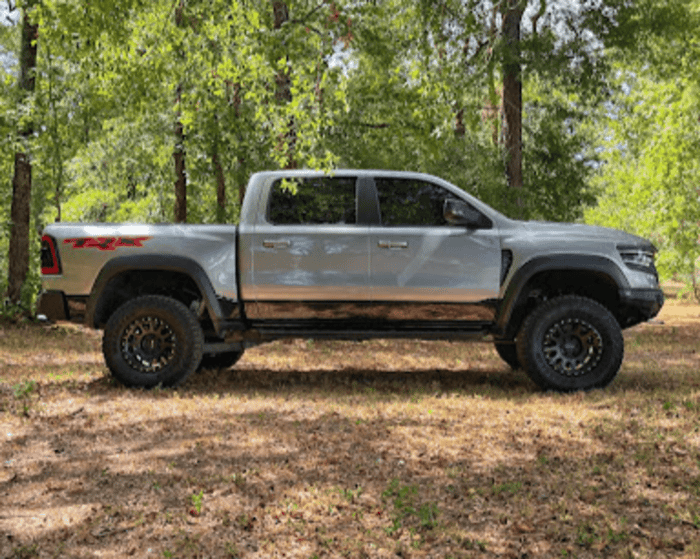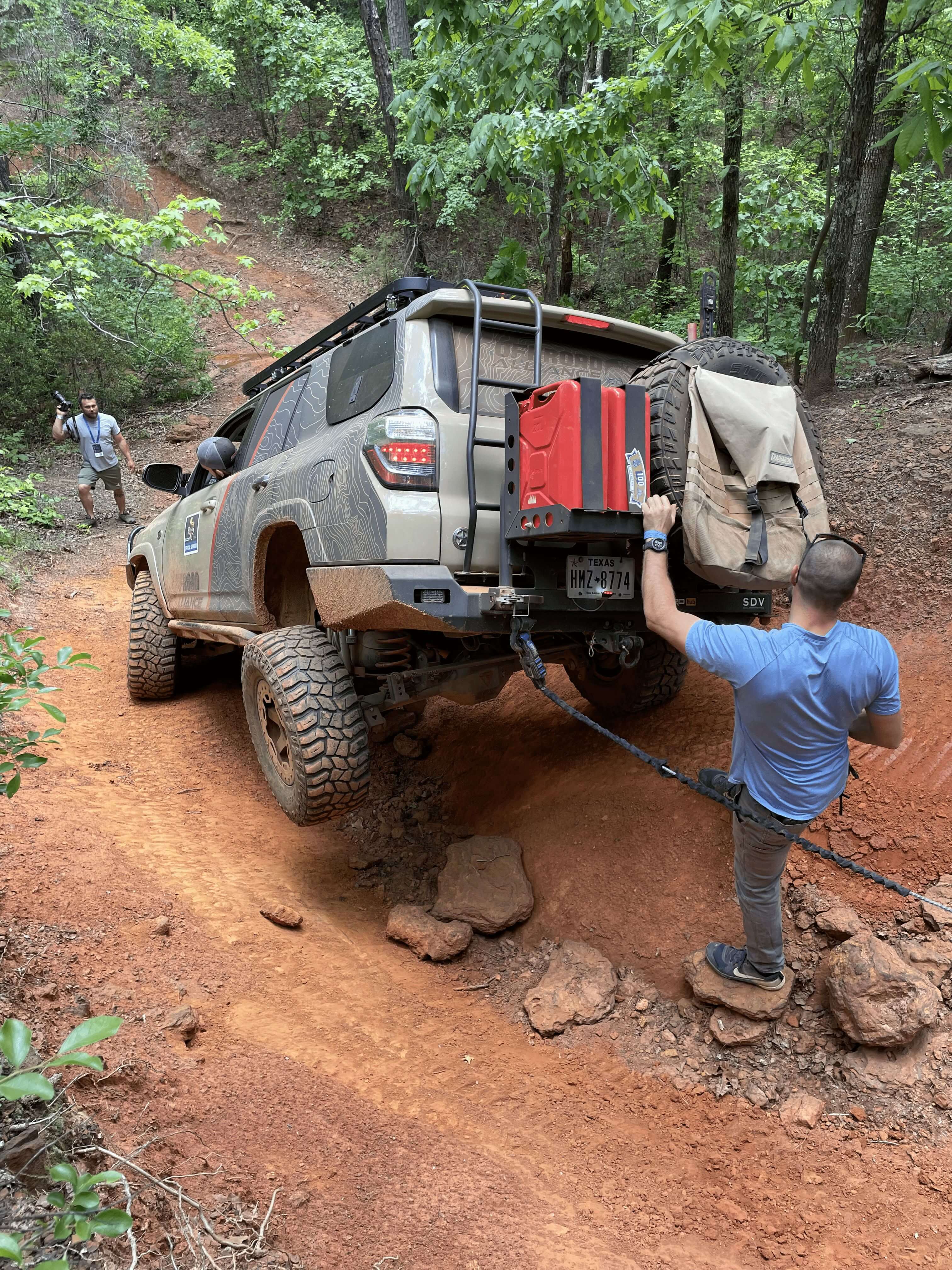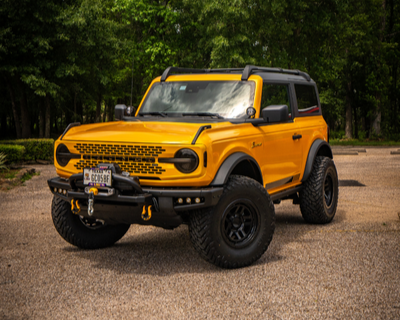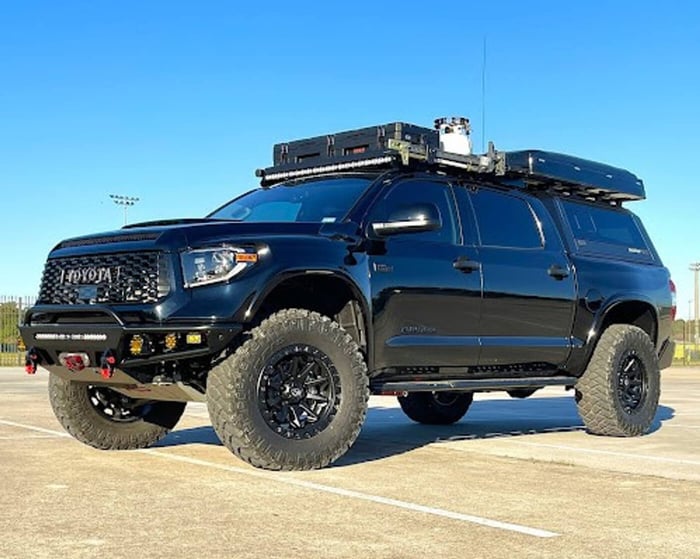
Understanding Ground Clearance and Why It’s Important
When you want to get the most out of your off-road truck or SUV, you need to understand ground clearance, how to use it to your advantage, and how to get more of it when you need a vehicle that can do even more. Going beyond just ride height, your clearance affects your vehicle’s ability to carry cargo, navigate obstacles, and survive the use and abuse that comes with off-roading. Understanding how to measure and use your clearance is a fundamental off-road skill. As your aftermarket truck parts pros, we’re proud to give you the experienced advice you need to get a better off-road experience with the customized vehicle you’re building.
The Chicken Or The Egg
The first thing you need to know about ground clearance is that it affects the type of offroading and terrain you can tackle with your vehicle, but the terrain and your off-roading style will also affect the ground clearance you need. As your off-roading skills improve and you start looking for larger challenges, you’ll need aftermarket modifications that improve your clearance to help you tackle larger obstacles. In short, choose your terrain to fit your vehicle, but upgrade your vehicle’s ground clearance to meet the demands of the terrain you’re planning on tackling.
Types Of Ground Clearance
You also need to understand that ground clearance isn’t a static measurement–a fact that has gotten plenty of off-roaders into a jam. Your vehicle’s ground clearance can change during a trek depending on the load it’s carrying, how far you air down your tires, and the forces exerted on its suspension at any given moment. You also need to remember that rather than a single, all-encompassing number, there are several different ground clearance measurements to keep in mind, especially if you tend to maneuver aggressively into, out of, and over obstacles.

- Ride Height - This is the base number most people mean when they ask about your ground clearance. Ride height is measured from the ground to the lowest part of your vehicle, whether it be the rock sliders on your chassis or the bottom of your differential case.
- Approach Angle - As your vehicle tilts forward when entering an obstacle, your clearance at the front of the vehicle changes. Your maximum approach angle is the steepest angle you can create without the lowest portion of your front bumper or skid plate scraping the ground. Think of it as two sides of a triangle where the ground is the base, and the straight line of your vehicle’s chassis creates the side that’s heading toward the peak of the triangle.
- Departure Angle - Similar to the approach angle, the departure angle involves the clearance you have at your back bumper to exit obstacles. Combined, these two ground clearance measurements give you the information you need to enter deeper mud, water, and gulleys.
- Breakover Angle - Some off-roading, like rock climbing, isn’t just about entering or exiting an obstacle but going over it. The breakover angle is the maximum angle between your tires and the undercarriage. Sure, you may be carrying a massive 40-degree approach angle for that boulder, but after the front tires get over it, you need a steep enough breakover angle to keep the underside of your vehicle from scraping until your back wheels can use that killer departure angle to crawl off of it.
Minimum Ride Height For Safer Off-Roading
As you can see, when it comes to ground clearance, there’s not a single “minimum safe clearance.” The ground clearance you need can change based on the terrain, driving conditions, and maneuvers you want to attempt. There are, however, some bare minimums you need before attempting certain conditions.
- Unpaved Roads and Gentle Two-Tracks - Whether they’re actually graded or just worn into roads by time and the off-roaders who came before you, these paths don’t need a huge amount of ground clearance. Sometimes referred to as “soft-roading,” 6-8 inches of clearance will get the job done.
- Unkempt Trails, Overlanding, Light Rock Crawling, Sand, Snow, and Shallow Mud - 8-10 inches gives you better angles and the clearance to navigate over small-to-midsize obstacles.
- Big Rocks, Big Mud, and Big Challenges - If you’re serious about pushing the envelope, you need at least 10-inches of ground clearance. For some terrain, more is better, but you’ll find the upgrades you need to make to your vehicle and driving skills as your off-roading experience evolves.

Improving Your Ground Clearance
When it’s time to adjust your ride height and improve clearance, you have several options available. While big lifts often require extensive wrench work and more custom parts to keep all your components working together, a modest lift of just a couple of inches is more than enough to give you a ride that’s ready for rougher, tougher terrain.
- Suspension Upgrades - Your first task is making sure your suspension is lifting your vehicle high enough for better ground clearance and giving you more aftermarket equipment options to work with. From beefier shocks and springs that are preloaded to raise your vehicle higher to new control arms and linkages that account for the increased range of travel, upgrading your suspension will have the greatest impact in the shortest amount of time. If that sounds like a complicated garage job, don’t worry.
ICON Vehicle Dynamics is one of the premier manufacturers of performance off-road suspensions, and they offer full system upgrades that are built around stages of performance. From the Stage 1 System that gives you a little more ground clearance without breaking the bank to the Stage 8 packages designed for competitive off-roading builds, there’s an option that’s right for your skills and budget, and that comes with components perfectly tuned to work together on your vehicle model. As an example, the Toyota Tacoma Stage 4 Suspension System gives you front coilovers and rear shocks with remote reservoirs, an additional leaf spring, new UCAs, and up to 3.5” of lift over stock.
- Wheels And Tires - One benefit of your new lifted suspension is the ability to run larger wheels and tires. These provide more surface area for traction, but they also help raise the entire vehicle, including the differential case, which won’t be directly affected by a suspension lift. You want a wheel approximately half the size of your tire, so a 16-inch wheel is perfect for 32 and 33-inch tires, while a 17-inch wheel will let you run some monster 35s. The lift you get from a new wheel tire combo depends on their size in relation to your current wheel and tire setup and will, of course, be affected by how much you air down since softer tires lower your vehicle slightly.
If you do a lot of low-tire-pressure driving, consider looking at wheels with beadlocks. Beadlocks use bolts to lock the bead in place, offering the support air pressure would when your tire is fully inflated. For those who often drive on extremely soft surfaces like sand or snow, they can make a big difference in how low you can go and the tire’s reliability on full air-down.
- Bumpers - Upgrading your front and rear bumpers doesn’t affect your ride height, but they can make a big difference for your ground clearance entering and exiting obstacles. Bumpers that keep your front and rear end high and conform tightly to the body panel curves around them offer better entry and departure angles. This lets you challenge larger or deeper obstacles more aggressively by getting your protective metal out of the way.
When it comes to off-roading bumpers, the Stealth Fighter line from Addictive Desert Designs is a great choice. Designed with sharp angles and a tight fit, they offer a higher profile at the front and rear of your vehicle without compromising on safety. ADD brings modern artistry to traditional metalworking that will turn heads while helping you off-road better.
- Skid Plates - Ok, skid plates don’t increase your ground clearance, but if you’re worried about ground clearance, you probably need to invest in some good skid plates too. Skid plates are metal sheets bolted under your vehicle’s most sensitive components to take a hit before they do. When shopping for bumpers, some even come with skid plates included to help get you started on the protection you need to off-road fearlessly.
Get The Ground Clearance You Need
When you’re ready to customize your vehicle for better ground clearance, we’re ready to help. Call and talk to one of our pros anytime for product information, installation help over the phone, or just to get advice about the best parts to raise your ride height. We have the parts you need in stock and ready to ship. Order your aftermarket off-road truck and SUV parts from Offroad Alliance today.

